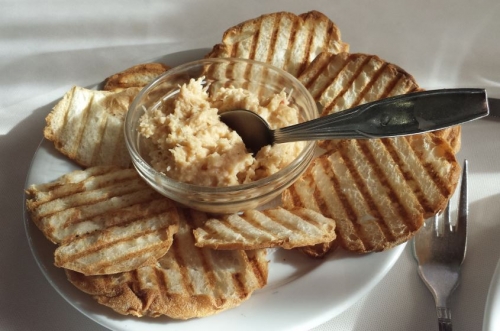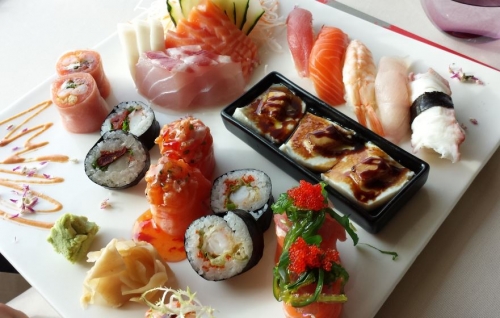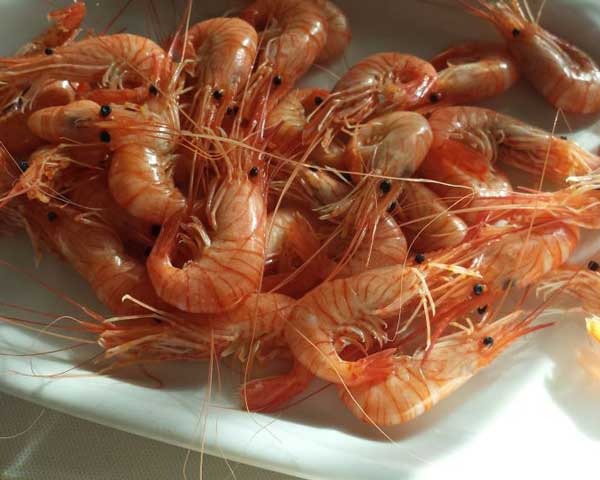5 Bites Of Porto
Situated in northwestern Portugal, where the Douro River meets the Atlantic, Porto is the country's second-largest city, after Lisbon, and one of its most engaging. Porto is famous for its medieval architecture (it is a UNESCO World Heritage Site), its elegant wrought-iron railroad bridge designed by Gustave Eiffel (of Tower fame), its remarkable Lello & Irmão bookshop (the inspiration for the Hogwarts library in the Harry Potter books; J.K. Rowling taught English in Porto in the early 1990s), and, for students of gastronomy, the world-famous fortified dessert wine that takes its name from the city.
In fact, the blending and aging facilities, called port lodges, that yield the wine in all its variety — from white to tawny to vintage, with numerous variations in-between — aren't technically in Porto at all, but in Vila Nova de Gaia, just across the river; because it faces north, instead of south as Porto does, it remains cooler, which had the effect of beneficially slowing the development of port in the days before refrigeration. But Vila Nova and Porto are the same town for all practical purposes, with bridges (not just Eiffel's) and boats connecting the two quickly and easily, and both offer a wide variety of excellent restaurants.
Other than port, the big draws here for the food and wine lover are the abundance of excellent seafood gracing local tables and the wealth of table wines, often superb, available in almost every eating place, from casual to upscale. Some of these wines come from the Douro, the same region that produces port, but there are vineyards and wineries in almost every portion of the country, and the regions of Alentejo, Dão, Bairrada, the Minho, Setubal, and more have many fine bottlings to offer. The bad news is that, while the usual international grape varieties (cabernet sauvignon, merlot, chardonnay, etc.) do exist in Portugal, the vast majority of the country's wines are based on grape varieties you will very likely have never heard of. You might recognize alvarinho is Spain's albariño, but what about loureiro, arinto, encruzado, fernão pires, tamarez, aragonez, alfrocheiro, touriga nacional, ramisco, trincadeira...? The good news is that most of these grapes produce wines that American palates should find agreeable and sometimes truly superb — and that very few bottles, even on the wine lists at top-rated restaurants, cost more than $30 or $40 (and plenty are considerably less). [pullquote:left]
Here are five restaurants, in both Porto and Vila Nova de Gaia, where excellent food and very good wines may be enjoyed.
George Mendes, the Portuguese-American chef-proprietor of Aldea in Manhattan, told me about A Grade, and I likely wouldn't have found it otherwise. It's a tiny place on a small, steep, cobblestone street rising up from the Ribeira, the lively cafe-filled Porto waterfront. There are only three communal tables, plus a few barstools and a couple of little tables out front. The man in charge, Adelino Ferreira, bounces around his minuscule realm, calling everybody "chef" (in the sense of "boss") and thanking diners every time he sets things down on the table. This is pretty often. No sooner are you seated than an array of snacks starts appearing — dense but delicious salt cod croquettes, hunks of a muenster-like cheese, crispy fried sardines, small pieces of octopus in vinaigrette, and a bread basket with five kinds of bread including one like focaccia flecked with bits of sausage and one very dense, moist, sweet variety, blue-gray in color, made with barley, millet, and honey. One of the few appetizers after this selection of treats is a puréed vegetable soup, accented with bits of carrot, turnip greens, and green beans, all very homey, very flavorful. Main dishes, which emerge from a kitchen the size of a walk-in closet, are mostly fish and other seafood, either oven-roasted or grilled ("A Grade" means "the grill"), served with boiled potatoes and simple vegetables. We had sole, sea bream, and squid, all very straightforward and fresh.

Gaveto is a considerably larger restaurant, with greater variety, located in Porto's fisherman's quarter, more or less the equivalent of the Barceloneta neighborhood in Barcelona. The place is bustling, the atmosphere is friendly and professional. We ate small boiled local shrimp, a lot of work but excellent and sweet (top); a lightly spicy crab pâté with thin slices of grilled bread (above); clams about the circumference of quarters, steamed with nothing more than garlic, parsley, olive oil, and a touch of white wine; shellfish soup with shreds of scallop, shrimp, and lobster; and then main courses of rice with lobster for two; grilled sole (chosen from three or four kinds of whole fish, bright-eyed and glistening, brought to the table for inspection) with boiled potatoes and sautéed turnip greens; and grilled lobster with matchstick potatoes, just wonderful, in two courses — the body meat cut up; and returned to the shell, and the claw meat and roe served separately.

Between the beachy beige and natural wood interior at Shis and the surf crashing on the rocks outside the window, I kept thinking I was in Malibu. Only the line of freighters on the horizon waiting to get into the commercial port around the bend and the Portuguese accents on the servers reminded me that I was Porto. The place has a seductive, easy-going air, and a cosmopolitan menu, one whole portion of which is devoted to sushi and sashimi (under the care of one Japanese and one Portuguese sushi chef). There isn't a huge variety of seafood available — just salmon, shrimp, octopus, butterfish, sea bass, and tuna — but their quality and freshness was impeccable. The sushi chefs have fun with their generous combination plate (above), offering butterfish sashimi topped with foie gras and salmon sashimi in a sweetish orange sauce, along with more traditional offerings. There are also exquisite oysters from the south of Portugal, a terrific slab of roasted salt cod in a mild cheese sauce atop puréed potatoes and sautéed turnip tops, and a rather scrawny looking but flavorful roast chicken, nicely browned and crisp and full of juicy flavor. A serving of excellent aged São Jorge cheese with fig preserves was a perfect coda. (In early January, not much than a month after my visit to Shis, the restaurant was destroyed by a tornado and raging waves. The owners promise to rebuild.)
In middle of Porto's old town, the bistro called Traça (which means both "moth" and "bookworm") offers amiable service and a hip atmosphere — its three open levels are framed in white tile and stucco with hardwood floors and dark red shutters on windows grated with wrought iron — and food that's pretty good if a little on the rough and ready side. A salad of cecina (bresaola-like dried beef) with baked goat cheese and balsamic-dressed greens accented with pine nuts and raisins, was fairly predictable, but very well balanced and delicious. Croquettes of cecina and of prosciutto were textbook examples of the genre. Hake with shrimp, white asparagus, and carrots, all gratinéed under a cheese sauce, was a bit of a muddle, but braised partridge with matchstick potatoes and piquillo peppers stuffed with ground venison and wild boar were hearty and authoritative.
Across the river in Vila Nova de Gaia, at The Yeatman, a luxury hotel property owned by the Taylor Fladgate port people, the elegant formal dining room merits Porto's only Michelin star. Here, executive chef Ricardo Costa offers a small à la carte selection and two intelligently designed multicourse menus. We mixed and matched, choosing dishes from both menus and from the à la carte selection, and ended up with such delights as roasted miniature squid and crayfish in a thyme-scented trumpetfish sauce; cream of mushroom soup with croquettes of liquefied celery; foie gras and oxtail terrine with pear salad; roasted turbot with pata negra ham; glazed Bisaro pork cheek confit with pearl barley risotto; and venison tenderloin with morels and cocoa sauce. Everything was cooked with real refinement; it was the kind of cooking you'd expect to find in the best restaurants of any major capital. The wine list here is stunning, and while it is hardly exclusively devoted to Portuguese vintages, the choice of those in encyclopedic, and the sommelier led us skillfully to some wonderful bottles.
